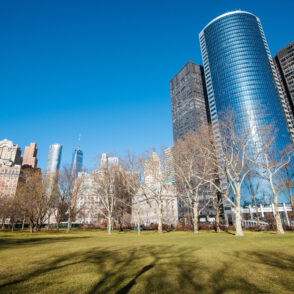Flipping – we’re not talking about gymnasts, we’re talking about real estate. As depicted on the HGTV show “Flip or Flop” (featuring the recently-divorced-but-still-flipping Tarek and Christina El Moussa), house flipping is an attractive pastime for people who have a keen eye for real estate and a desire to turn a relatively quick profit on their investments. For the most part, investing in real estate can be a more reliably stable endeavor than riskier investments like the stock market – especially in a city like New York, where prices generally remain high. Though the real estate market is not immune to the ebbs and flows that affect any other business – relegating some flippers to waiting for a bounce in order to sell – overwhelming historical evidence shows that prices will always rise in the end.
So, if you’re considering a flipping attempt, here are a few things to think about before you get started.
House Rules Apply
The same rules apply to making a purchase you intend to flip as to one you intend to live in. Have a down payment ready. Get your applications, financials and approvals in order. And be ready to move quickly – this is NYC, after all.
Understand Market Conditions
Timing your flip to the most advantageous market conditions is a great way to ensure you turn the biggest profit. If you buy during a lull in the market, you’ll likely be able to swing a lower purchase price, allotting a bigger budget to renovations and giving you the time to make upgrades while waiting for the pendulum to swing back in the other direction. With the NYC resale market currently seeing a rise in concessions and discounts, now could be a great time to strike while the iron is hot (or at least more open to negotiation).
Know Your Geography
It’s crucial to know where to look to turn the highest profit, regardless of whether you’re on a strict flipping budget or overflowing with capital. Hot, well-established neighborhoods will consistently achieve high sales and rental prices, but finding flip-worthy space will be tough – and you’ll pay a premium for it. Attempting a flip in one of those areas may also mean you need to put more money into renovations – depending on the condition of the home – to compete with the surrounding area, making a sizable profit harder to come by.
The key is to identify and target the sweet spot: A home in a neighborhood that’s on the upswing, attracting a growing number of residents, but where the prices are still considered reasonable, making it easier to strike a balance between the purchase price and your renovation budget.
While buyers will tend to avoid purchasing a home in a neighborhood surrounded by construction, as a flipper, construction can be a great sign that new infrastructure is on the way, ensuring a rise in property values. Do your research to understand what is coming to the area to have the best chance of getting in on the ground floor of NYC’s next hot nabe.
Don’t Go Overboard
Never forget that there is such a thing as too much renovating. If you’re making the changes for yourself and your family, then the sky’s the limit. But if you’re flipping, you don’t want to get too deep into the weeds with upgrades that won’t turn a profit. While some units will require a gut renovation, others may need less extensive changes to achieve an optimal ROI, and – just like in English 101 – you don’t want to fall on the wrong side of the bell curve.


